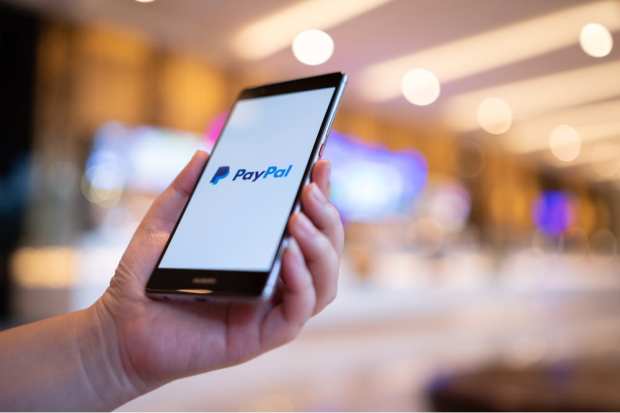PayPal: The Pandemic’s Digital Shift And Retail’s ‘Super Bowl’

The pandemic didn’t create the great shift to digital spending that has been observed over the last 12 weeks, despite the fact that it is often awarded much of the credit.
A fairer assessment of the situation, PayPal’s Vice President and General Manager of North America and Australia Marcy Campbell told Karen Webster in a recent conversation, is that the pandemic has tremendously accelerated a shift away from physical purchasing and toward digital transactions that was already underway.
And that shift has been a dramatic one. The first day of May was PayPal’s most active day of transactions on record, soundly beating out even the spikes observed on both Black Friday and Cyber Monday of 2019. For many merchants, the massive digital spike has been unexpected, requiring a lot of business models to be adjusted for a world that has rapidly gone digital and will likely remain that way. Retailers that were primarily physical found themselves making overnight pivots to continue moving their inventory or services.
Smaller, digital-first merchants have been forced to scale fast to meet an incredible surge in demand, which represents both an incredible opportunity and a large challenge.
“We’ve had some interesting conversations with CEOs of different companies,” Campbell said. “One actually told me that this is basically their Super Bowl. They are looking at this shift to digital as a way to reexamine their business and accelerate it. She commented that if they are not a $2 billion business by the end of next year, they will have missed their opportunity.”
And, Campbell said, there is an opportunity to be captured for players of all sizes and descriptions across the retail landscape as the world moves into its post-pandemic recovery. Physical retail isn’t dead, she noted, but the digital-first consumers created by the pandemic aren’t going anywhere. That means merchants need to start reexamining their reopening plans and the technological advances they are relying on to boost them, through the lens of a specific pair of questions.
“How do they interact with their consumers in a way that’s trusted and that accelerates their brand? Meaning, how can they develop a meaningful relationship with their customers that’s not just transactive?” Campbell said.
Rebuilding The Retail Journey
The period that pushed the exponential digital explosion is coming to an end as all 50 states have now begun their phased reopening processes. As Campbell noted, retailers are thinking about their own re-entries and how they will get through this summer and begin to expand and modify their service offerings.
And modifications are surely on the horizon as retailers are now adapting their plans for the rapid emergence of five years’ worth of digital expansion occurring over the course of 12 weeks. For firms that have been shut down and have seen a profound pause in their business — such as players in events, ticketing, travel and restaurants — there has been an opportunity to take the time to “actually drill down on their payments infrastructure and focus on building to the comeback,” said Campbell.
And for the digital players that have picked up speed, she noted, the goal is to find ways to continue to expand their footprints and market penetration to retain all the momentum they’ve built.
The large physical retailers are contemplating the biggest shifts, however, as they are facing the biggest challenge: bringing consumers back to stores in a world where there is no vaccine, and where those consumers have already built digital routines they enjoy and are unlikely to simply abandon.
“They’re thinking about digital, and they’re thinking about physical locations, but they are thinking about it differently,” said Campbell. “Merchants are looking at physical stores as showrooms, where consumers come to see goods before having them shipped to their homes for the foreseeable future. When we think long term, when there’s a vaccine, do we go back to normal as it was before? Personally, I think technology is driving us to a digital-first world where physical is an adjunct to that digital. And I think people are looking at that as a long-term shift. The coronavirus accelerated that shift for all of us.”
Readying For An Unknown New Normal
What comes next, Campbell noted, is very much a question mark across the retail landscape because so much remains up in the air as businesses are reopening. What has been heartening is that in PayPal’s conversations with merchants, she said, there has been a pervading sense of optimism in terms of the ability to expand into new areas. And there is a greater willingness to think expansively when it comes to every part of the consumer experience — down to enabling contactless and touch-free payments via QR codes or Venmo.
“We think we will see merchants offering contactless as a very visible solution, which will make people feel more comfortable going back into stores for things that are not everyday essentials,” Campbell said.
Consumers’ comfort in their shopping journeys will ultimately be the decider of success in the coming retail landscape, she noted — and merchants that can most easily connect consumers to those feelings of security will continue to succeed.
“The question will be, ‘Can retailers keep up with that acceleration?’” she said. “Because I don’t think anybody believes it’s going to go back to where it was pre-March.”
